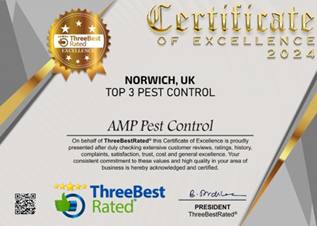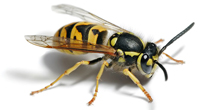Rats

The Common Rat is brownish grey on the back and grey underneath, but colour can vary. From head to tip of tail a rat can measure 20-30 cm. It is found in both urban and rural areas, both indoors and outdoors and is often associated with sewer systems.
Why it is a pest
Rats can be a serious risk to health. They will destroy and contaminate food stores, and carry many forms of disease including salmonella and Weils Disease through their droppings and urine. These conditions can be fatal to humans, although this is very rare.
Many people also find the presence of rodents unacceptable.
As a ratís teeth grow continually, gnawing is a necessary behaviour. Almost any kind of material may be gnawed ie. electrical cable, water pipes. Rats burrow into grassy banks, underneath sheds and if given access can exploit cavities in walls and roof spaces of buildings, which they use for harbourage, to store food and often nest.
Rats are also good climbers and can climb vertical walls if the surface is sufficiently rough. They can also climb along fences and up bird tables to access food.
Rats are good swimmers and are often found near rivers and also in sewers.
Biology of the Pest
Rats can breed even more efficiently than rabbits and large infestations can quickly develop if not controlled. Rats are capable of reproducing at about 3 months of age. After mating pregnancy lasts for 21-24 days and averaging 6-11 young rats in a litter.
Signs of Pest Presence
- Sighting rats
- Presence of droppings. Typically 3/4 inch and up to 1 inch in length (size of a raisin or bigger) and tapering to a point at one or both ends.
- Rat runs. Rats tend to follow the same routes and eventually can leave well worn pathways.
- Foot prints and tail swipes on dusty surfaces.
- Smear marks. These form in places where the rat brushes against frequently leaving a greasy or dirty mark.
- Burrows. In general rat holes are about 7 to 10 cm in diameter. (approximate size of a tennis ball)
Removal Methods
There are several extermination and humane options to choose from. We can advise you on each one and carry out the removal method of your choice.
Whether you need help with a one-off pest removal, or are looking for regular service visits to minimise the possibility of a pest infestation causing impact on your business...
Call us on 07939964443
Prevention is better than Cure - Working with the Environment










